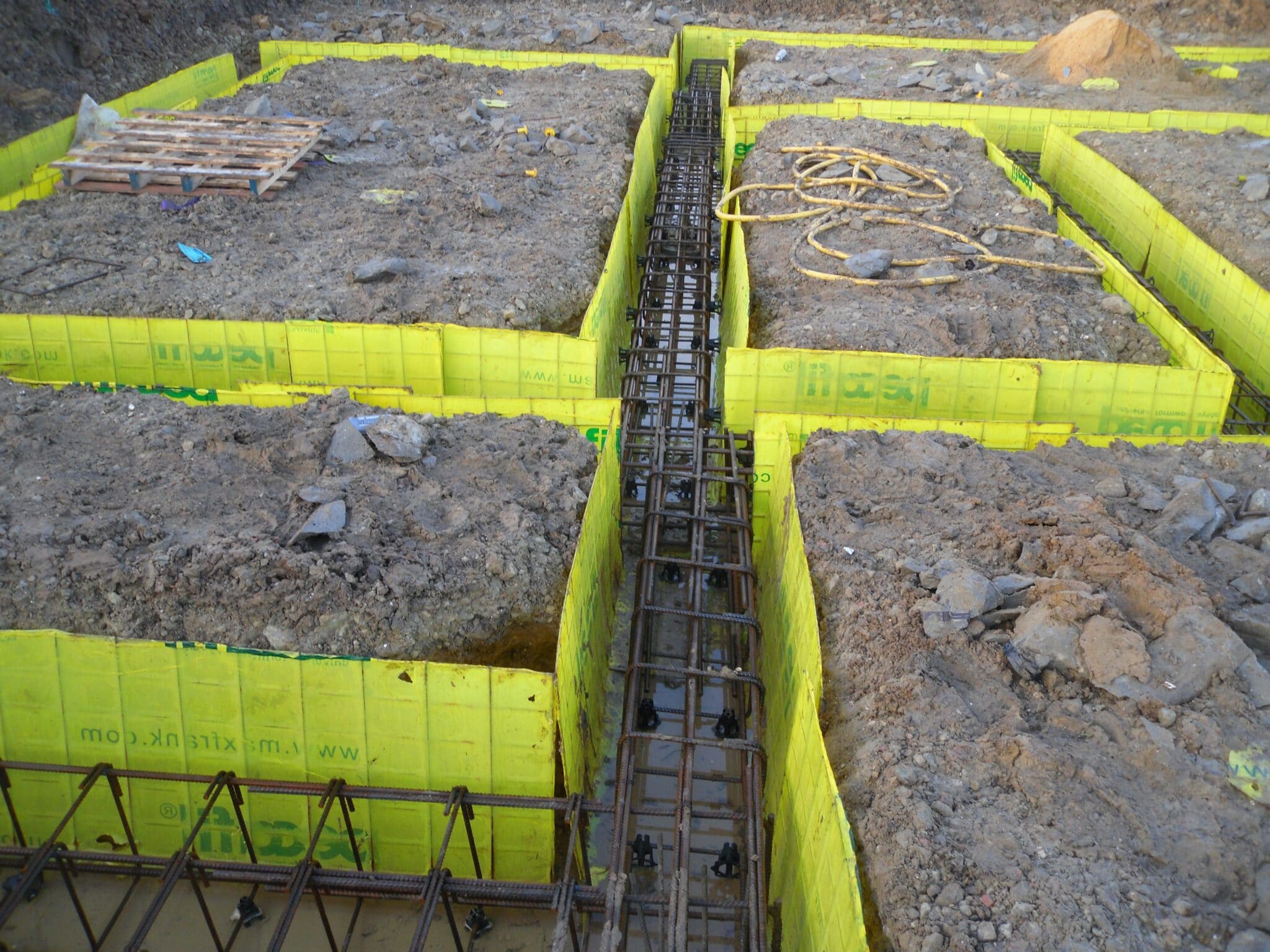
21 Aug The Role of Piling in Foundation Construction: A Comprehensive Guide
Traditionally, piling was a construction method used for major projects, such as bridges or oil rigs. Over the past few decades, the development of mini piling has made it the technique of choice for foundations in domestic buildings.
Piling for domestic use is sometimes associated with emergency measures to prevent your home from collapsing. While that is certainly an important use, however, the role of piling in foundation construction is much wider.
What Are the Main Types of Piling?
Driven piles are forced directly into the ground, without removing material, so they’re supported by the earth around them. They can be driven from the top by a Grundomat compressed air machine, or from the steel toe of the pile. This doesn’t require such bulky equipment.
Bored piles involve drilling the hole in advance. Metal augers are inserted, either continuous or in sections, which provide support while grout or concrete is poured in. The auger is withdrawn during the process, leaving the materials forming the pile itself.
The choice is largely a matter of what’s most convenient for the required use — for instance, bottom-driven piling uses relatively little machinery, so is the method of choice in a confined area. In general, though, they do much the same work, distributing the weight of the building down through weaker subsoil to a level that can support it (using the skin friction and end-bearing capacity of the pile).
The other main type is contiguous piling. Here, a row of piles is inserted, effectively forming a retaining wall, which can be either a permanent or temporary structure.
What Is Piling Used For?
Countering Subsidence
As a form of underpinning, piling is often associated in people’s minds with remediating a property from subsidence. This might be caused by a variety of issues, ranging from saturated soils, and shrinkable soils to old mine-workings beneath the building.
This will normally be corrected by bored or driven mini piles; the choice will be dependent on the soil conditions and the amount of access.
Supporting Extensions
The foundation capacity may also need to be increased if you’re substantially increasing the weight of the building they support. This will be especially true, for example, if you’re raising the roof to add an additional storey.
If you’re extending out from the main building, this will of course require new foundations. If excavating traditional foundations is likely to cause too much disruption to the land, supporting it on mini piles may be the perfect solution.
Constructing Basements
Most properties in this country don’t have basements, but it’s become increasingly popular to add a retrofit basement. This may need contiguous piling to form a temporary retaining wall during construction, or you can even make it the core of the permanent walls.
Since you’ll be excavating through the existing foundations, you’ll need new foundations lower down. Excavating under the property is going to be time-consuming and disruptive, leaving mini-piling the obvious solution.
New Builds
While new builds normally have traditionally excavated foundations, there are increasingly several roles for piling. For one thing, contiguous piling can be used to support the sides of the excavations, especially if you’re excavating close to an existing structure.
Bored or driven piles can also be used to supplement the excavated foundations, especially if the soil quality is poor or the water table is high. By strengthening the foundations with piles, you’re effectively underpinning the structure before it’s even built. Piles mitigate both the amount of spoil to be removed and the concrete used.
Hire an Expert Piling Contractor
Piling is an incredibly valuable technique for constructing foundations — but it has to be done right. While a general contractor may claim to be able to handle the job, you really need a company with a proven track record, as well as the equipment and expertise necessary in-house.
Give U&M a ring to find out more about using piling for foundation construction.




